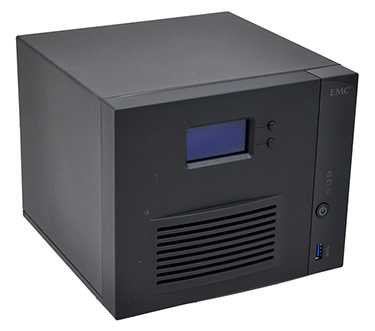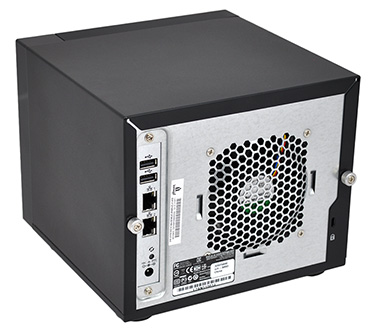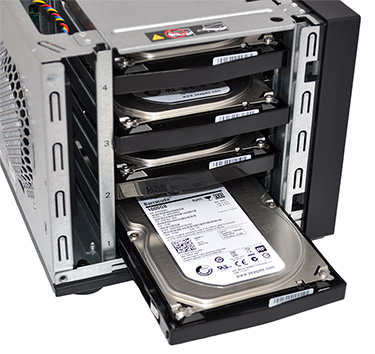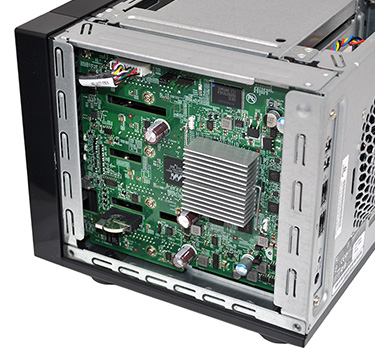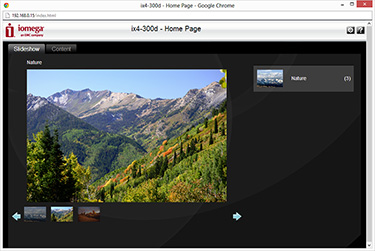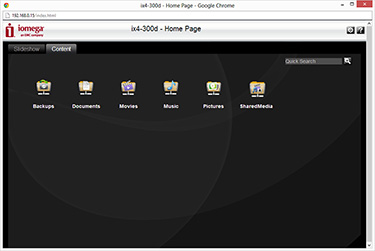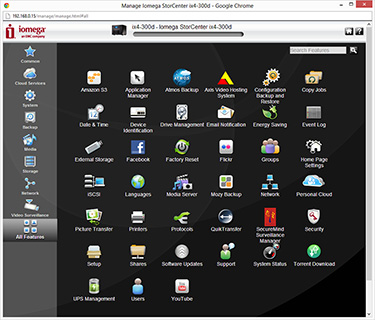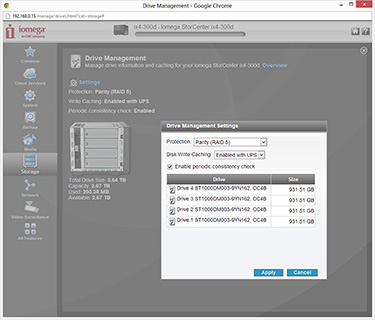Introduction
Iomega's range of StorCenter network-attached storage devices can for the most part be sorted into two categories; the px-series - typically equipped with an Intel processor - offers maximum performance for enterprise environments, while the ix-series - typically powered by a Marvell chip - presents an affordable solution to small offices or home networks.
The sizeable gulf in performance has historically drawn a clear line between the two StorCenter series, but Iomega is now beginning to blur the boundaries by introducing a quicker ix-series model dubbed the StorCenter ix4-300d.
Claiming to offer more than double the performance of its predecessor, the four-bay ix4-300d is available in a choice of 12TB (£959), 8TB (£767), 4TB (£575) or diskless (£263) configurations and is powered by a dual-core 1.3GHz Marvell Armada XP processor and 512MB of DDR3 memory.
While performance isn't going to be as strong as the numerous of Intel-based competitors - including Iomega's own px4-300d - the Marvell-powered ix4-300d is competitively priced and slots into the market quite nicely. It should be quicker than earlier Marvell units, and it's still a couple of hundred pounds cheaper than Intel alternatives.
Iomega's chassis isn't the most attractive, but it's well built and at 196mm x 206mm x 168mm in size, it won't take up too much on-desk real estate. A diskless unit weighs in at 4.46kg, but our review sample - a 4TB configuration equipped with four Seagate Barracuda hard disks (model 35568) - tips the scales at 7.08kg.
The front of the unit is simple in appearance, sporting an LCD screen that displays system status, a power button and a front-facing USB 3.0 port with one-touch transfer. Around the back you'll find two USB 2.0 ports, along with dual Gigabit Ethernet ports that support failover and 802.3ad link aggregation, a Kensington lock and a connector for the bundled 90W power supply. A single 120mm fan is tasked with cooling the entire unit, but while it does a good job, there's no option to adjust fan speed based on system temperature and as a result the ix4-300d is clearly audible when powered on.
Undoing two thumbscrews and removing the chassis' cover reveals access to the internal SATA 3Gbps drive bays. Each drive is housed in a plastic tray that requires a firm tug to release, but note that the ix4-300d does not support hot-swapping, so be certain to power-off the device before changing drives.
As a mid-range solution, the ix4 offers basic RAID configurations without some of the frills available to premium units. The NAS can be used to create a single RAID volume - in modes 0, 5, 10 or JBOD - but RAID expansion isn't supported, so you'll need to re-create the entire volume should you wish to add/remove drives. Doing so can be a timely process, too, as our review sample required a full nine hours in order to create a quad-drive RAID 5 volume.
A quick look around the other side reveals many of the ix4-300d's core components - including the dual-core 1.3GHz Marvell Armada XP processor, two Hynix memory chips that combine to provide the 512MB of onboard DDR3, and a 512MB Samsung flash memory module that's used to house the operating system. A pair of Marvell Alaska 88E1318 controllers are in place to govern each Gigabit Ethernet port, and an NEC controller drives the unit's solitary USB 3.0 port.
As with the majority of modern-day NAS solutions, the ix4-300d is managed through a web-based admin panel. Perhaps a sign of the unit's target audience of home/small office users, Iomega's admin panel begins with a slideshow of pictures stored on the device and provides quick shortcuts to popular content - such as movies, music and documents.
Behind the multimedia-focussed home page you'll find all of the other NAS functions, and though this is a mid-range offering, Iomega's feature set is plentiful.
The admin panel is well presented and easy to navigate, with self-explanatory icons used as a top-level menu. Dig deeper into these and you'll find almost everything you'd expect on a home-office NAS - including email notifications, power scheduling, a built-in DLNA media server, individual user accounts, a choice of local or cloud backup utilities (including support for Apple Time Machine), FTP protocol and a Torrent download manager. In addition to the basics, business users can also find a few extra sprinklings such as support for Windows Active Directory and iSCSI targets.
There are limitations throughout - the power schedule can't be configured on a daily basis, it's impossible to limit access to shares via FTP (it's all or nothing) and you can't create multiple RAID volumes - but Iomega has most mainstream functions covered and, for those who are new to network-attached storage, the ix4-300d couples good capacity with ease of use. But what about performance?






